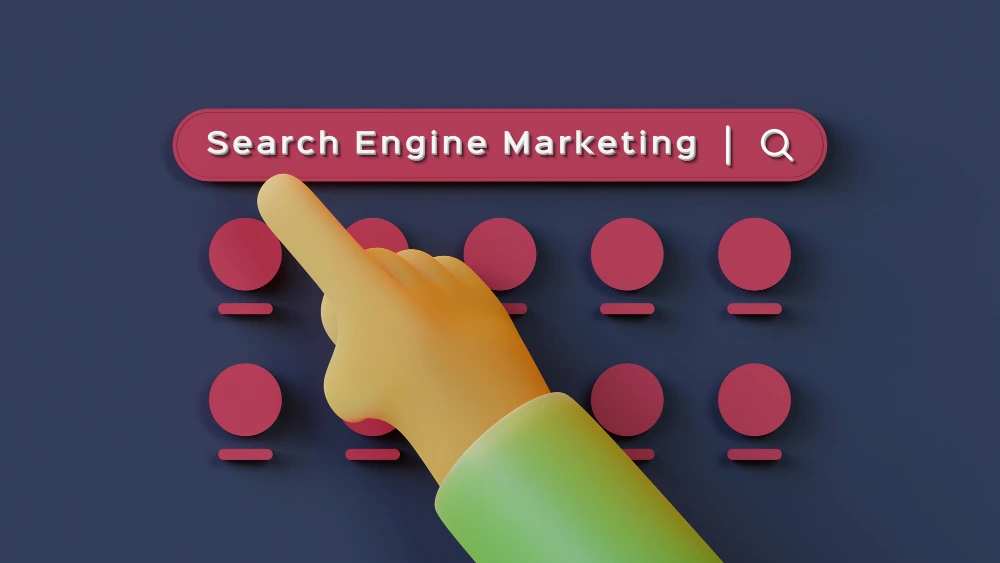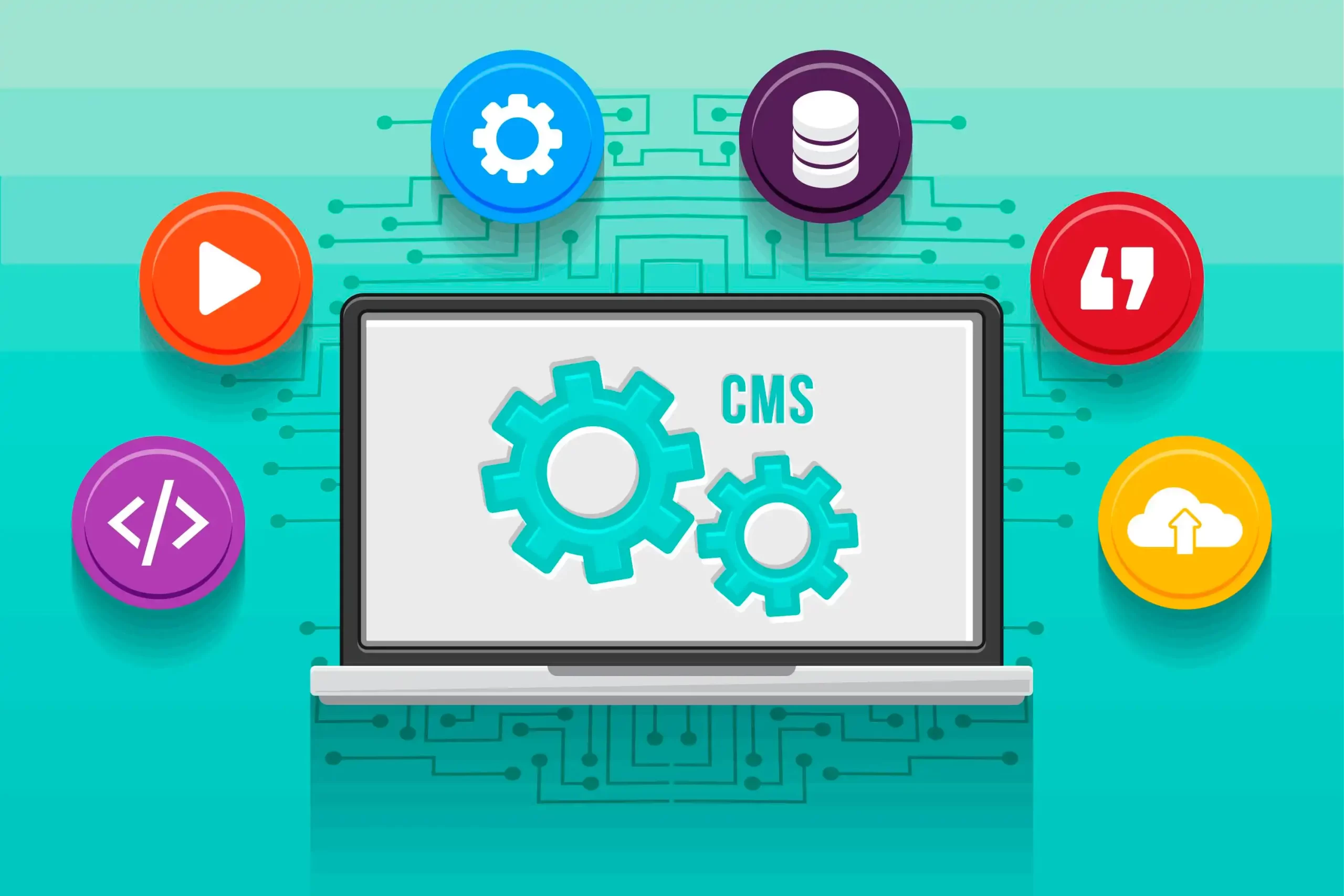Ever feel like your website is lost in the vastness of the internet, despite your best efforts? What if you could transform it into a customer magnet, effortlessly attracting the exact people who need your products or services? Programmatic SEO is the key. This powerful approach harnesses automation and smart algorithms to streamline how search engines find and rank your website. Think of it as hiring a tireless, data-driven expert to boost your visibility, drive targeted traffic, and help your business thrive online.
Automation is key. Programmatic SEO eliminates time-consuming manual optimization tasks.
Target the Right Audience: Pinpoint the keywords and search terms your ideal customers use.
Effortless Scaling: Create optimized content for hundreds, even thousands, of relevant search terms.
Data-Driven Results: Track what’s working and easily adapt your strategies for maximum success.
Key Takeaways:
- Programmatic SEO offers a powerful solution to enhance website traffic and search engine rankings.
- It leverages automation and advanced algorithms to optimize website content for search engines.
- Programmatic SEO saves time and effort by automating SEO tasks such as keyword research and content creation.
- By implementing programmatic SEO strategies, businesses can gain a competitive advantage and drive targeted traffic.
- Programmatic SEO aims to deliver high-quality, optimized content that resonates with the target audience.
What is programmatic SEO? Your Shortcut to Effortless Search Engine Domination
Imagine having a team of expert SEO professionals working 24/7 to optimize your website but without the hefty price tag. That’s the power of programmatic SEO.
In Simple Terms: Programmatic SEO uses specialized software and intelligent algorithms to automate many of the time-consuming tasks involved in search engine optimization (SEO). Think of it as a smart, tireless robot enhancing your website’s visibility on search engines like Google.
How it works:
- Keyword Power: Programmatic SEO tools find the exact words and phrases your potential customers are searching for.
- Content optimization made easy: It helps you create and tweak your website pages to perfectly match what search engines want to see.
- Tracking Success: See what’s working and what’s not with detailed analytics so you can constantly improve your results.
Why Programmatic SEO Matters for Your Business
- Beat the Competition: Stay ahead of the game by quickly adapting to ever-changing search engine algorithms.
- Grow Your Reach: Effortlessly create optimized web pages for hundreds or even thousands of relevant keywords, maximizing your visibility
- Save Time and Money: Automate tedious SEO tasks, freeing your team to focus on what they do best.
- Results You Can Measure: Make smarter decisions about your website with data-driven insights.
What’s the point of programmatic SEO?
Ultimately, programmatic SEO aims to make your website the go-to answer when your ideal customers search online. It helps you supercharge your organic traffic (visitors who find you through search engines, not paid ads) without endlessly adding to your workload. By automating key SEO tasks, you can scale your efforts, reach more of your target audience, and ultimately boost your bottom line. Simply put, programmatic SEO is about working smarter, not harder, to drive sustainable business growth.
Understanding Keyword Tone for Your Audience
Keyword tone is all about the way the language in your search terms makes your audience feel, and it impacts how well your content connects with your ideal readers. Here’s how to find the right tone:
Know Your Target Customer:
- What are their pain points, desires, and goals?
- Are they casual or more formal in the way they speak and search?
- What level of technical knowledge do they have about your industry?
Types of Keyword Tones
- Informal: conversational, friendly, as if you’re speaking to a friend. (Example: “best hikes near me”)
- Formal: professional, often used with complex or niche industries. (Example: “enterprise cybersecurity solutions”)
- Urgent: Creates a sense of immediacy, prompting action. (Example: “Plumber near me open now”)
- Informational: focused on learning and gaining knowledge. (Example: “How to fix a leaky faucet”)
Tools to help:
- Google Trends: See how search terms change in popularity over time
- Answer the Public: Gives insight into the types of questions people are asking around a topic.
- Competitor Analysis: See how similar businesses target keywords with their content (be sure to differentiate, not copy, what they do).
Content That Matches Your Keyword Tone
Let’s pretend your target audience is new homeowners interested in DIY projects, and your focus keyword is “how to paint a room”. Here’s how tone shapes content:
Example: Informal & Friendly Tone
“Ready to ditch those boring walls? Let’s make painting your room fun and stress-free. Here’s your easy-to-follow guide!”
Example: Informational & Helpful Tone
“Transform your room with a fresh coat of paint. This in-depth guide covers everything from choosing the perfect color to expert brush techniques.”
Key Takeaway: It’s not just about the keywords themselves, but how the surrounding content reinforces the tone you choose.
The Fundamentals of Programmatic SEO
In this section, we will delve into the fundamental elements of programmatic SEO and explore how it can significantly enhance your website’s search engine rankings. Programmatic SEO is a data-driven approach that leverages automation and advanced algorithms to optimize website content and improve its visibility in search engine results pages.
One of the key aspects of programmatic SEO is the use of various tools and technologies that streamline and automate the optimization process. These tools help marketers analyze data, identify keyword opportunities, and optimize content to align with search engine algorithms.
Let’s take a closer look at some of the essential programmatic SEO tools:
1. Keyword Research Tools
Keyword research is a crucial part of programmatic SEO, as it helps identify relevant keywords and phrases that can drive organic traffic to your website. Tools like Google Keyword Planner, SEMrush, and Moz Keyword Explorer provide valuable insights into keyword search volume, competition, and related keyword suggestions.
2. Content Optimization Tools
Content optimization tools assist in optimizing on-page elements such as title tags, meta descriptions, header tags, and keyword density. Yoast SEO and Moz Pro are popular examples of content optimization tools that provide real-time suggestions and feedback to improve the search engine friendliness of your content.
3. Rank Tracking Tools
Rank-tracking tools help monitor your website’s organic search rankings and provide valuable data on keyword performance over time. Tools like Ahrefs and SEMrush allow you to track keyword rankings, analyze competitor rankings, and identify areas for improvement in your programmatic SEO strategy.
4. Data Analytics Tools
Data analytics tools enable marketers to measure the effectiveness of their programmatic SEO efforts. Tools like Google Analytics and Google Search Console provide insights into organic search traffic, user behavior, and conversion rates. These tools help you track the impact of programmatic SEO on your website’s performance and make data-driven optimizations.
By leveraging these programmatic SEO tools, marketers can streamline their optimization efforts, identify opportunities, and ultimately improve their website’s search engine rankings. In the next section, we will explore the benefits of incorporating programmatic SEO into your digital marketing strategy.
Benefits of Programmatic SEO
Incorporating programmatic SEO into your digital marketing strategy can yield numerous benefits. By combining the precision of programmatic advertising with effective SEO strategies, you can maximize your website’s visibility, attract targeted traffic, and achieve higher conversion rates. Let’s explore the key advantages of programmatic SEO and how it can revolutionize your online presence.
1. Enhanced Targeting and Personalization
Programmatic SEO allows you to precisely target your audience based on various demographics, interests, and online behaviors. By leveraging programmatic advertising in SEO, you can deliver personalized content and advertisements that resonate with your target market, leading to higher engagement rates.
2. Increased Efficiency and Cost-Effectiveness
With programmatic SEO strategies, you can automate various processes and streamline your digital marketing efforts. This not only saves time but also reduces manual errors, allowing you to achieve higher efficiency in your SEO campaigns. Additionally, programmatic advertising in SEO can be highly cost-effective, as it enables you to optimize your ad spend based on performance metrics and real-time data.
3. Improved Performance and ROI
By integrating programmatic SEO into your overall marketing strategy, you can optimize your website’s performance and enhance its visibility in search engine results. The combination of programmatic advertising with effective SEO techniques ensures that your content reaches the right audience at the right time, driving qualified traffic and increasing your conversion rates. Ultimately, this leads to a higher return on investment (ROI) for your business.
| Benefits of Programmatic SEO | Description |
| Enhanced Targeting and Personalization | Programmatic SEO allows accurate audience targeting and personalized content delivery based on demographics and online behaviors. |
| Increased Efficiency and Cost-Effectiveness | Programmatic SEO automates processes, saves time, reduces errors, and optimizes ad spend for higher efficiency and cost-effectiveness. |
| Improved Performance and ROI | Integrating programmatic SEO improves website performance, search visibility, drives qualified traffic, and increases conversions for a higher ROI. |
By leveraging the benefits of programmatic SEO, you can stay ahead of your competition, drive sustainable growth, and achieve your digital marketing goals.
Programmatic SEO vs Traditional SEO
When it comes to optimizing your website for search engines, there are two main approaches you can take: programmatic SEO and traditional SEO. Both methods have their advantages and disadvantages, and understanding the differences between them can help you make informed decisions about your SEO strategy.
Traditional SEO involves manual optimization techniques, such as keyword research, on-page optimization, and link building. It relies heavily on human expertise and intervention to drive organic traffic to your website. While traditional SEO has been the go-to strategy for many years, it can be time-consuming and limited in scalability.
On the other hand, programmatic SEO leverages automation and machine learning technologies to streamline and enhance the optimization process. With programmatic SEO, algorithms analyze vast amounts of data to identify trends, make predictions, and automate optimization tasks. This approach enables websites to adapt and evolve in real-time, maximizing their performance on search engine results pages.
Advantages of Programmatic SEO
- Efficiency: Programmatic SEO automation allows for faster and more efficient optimization, reducing the need for manual intervention.
- Scalability: Programmatic SEO can be easily scaled to handle large and complex websites, making it an ideal choice for businesses with extensive online presence.
- Data-driven insights: With programmatic SEO, you can gain valuable insights into user behavior, keyword performance, and content effectiveness through advanced analytics.
Disadvantages of Programmatic SEO
- Complexity: Implementing programmatic SEO requires technical expertise and an understanding of how algorithms and data analysis work.
- Limited human touch: While automation can save time and resources, it may lack the human touch in terms of creative optimization and tailored strategies.
- Algorithmic reliance: Programmatic SEO relies heavily on algorithms, making it susceptible to changes in search engine algorithms and updates.
Overall, the choice between programmatic SEO and traditional SEO depends on your business goals, resources, and the level of automation you’re comfortable with. Some businesses may prefer the hands-on approach of traditional SEO, while others may embrace the efficiency and scalability of programmatic SEO automation.
Now that we’ve explored the differences between programmatic SEO and traditional SEO, let’s move on to the next section, where we will discuss how to implement programmatic SEO strategies effectively.
| Programmatic SEO | Traditional SEO |
| Uses automation and machine learning technologies | Relies on manual optimization techniques |
| Efficient and scalable | Time-consuming and less scalable |
| Data-driven insights through advanced analytics | Relies on human expertise for data analysis |
| Complex implementation requiring technical expertise | Simpler implementation with basic technical skills |
| Potential lack of human touch in optimization strategies | Allows for creative optimization and tailored strategies |
| Potentially impacted by algorithmic changes | Relies on consistent optimization techniques |
Implementing Programmatic SEO
When it comes to optimizing your website for search engines, programmatic SEO strategies can play a crucial role in driving organic traffic and boosting your online visibility. In this section, we will explore how to effectively implement programmatic SEO techniques that align with your existing SEO framework.
1. Perform a Comprehensive SEO Audit
To kickstart your programmatic SEO implementation process, it’s essential to conduct a thorough SEO audit of your website. Identify areas that need improvement, such as keyword optimization, meta tags, and site structure. This step will serve as a baseline for measuring the success of your programmatic SEO efforts.
2. Develop a Strategic Programmatic SEO Plan
Creating a well-defined programmatic SEO plan is crucial for successful implementation. Define clear objectives, set measurable goals, and outline specific strategies to be executed. Consider factors such as content optimization, on-page SEO, and backlink building to maximize the impact of your programmatic SEO strategy.
3. Leverage Programmatic SEO Tools
Programmatic SEO tools can significantly streamline your implementation process and provide valuable insights into keyword research, competitor analysis, and performance tracking. Utilize tools like SEMrush, Ahrefs, or Moz to optimize your SEO efforts and stay ahead of the competition.
4. Optimize Website Content
Content optimization is a vital aspect of programmatic SEO. Craft high-quality, engaging content that incorporates relevant keywords and aligns with user intent. Focus on improving your website’s metadata, headers, and image alt tags to make it more search engine friendly.
5. Implement Schema Markup
Schema markup is a structured data vocabulary that helps search engines better understand your website’s content. Implementing schema markup can enhance your website’s visibility in search results and improve click-through rates. Leverage tools like Google’s Structured Data Markup Helper to easily add schema markup to your web pages.
6. Monitor and Analyze Performance
Regularly monitor and analyze the performance of your programmatic SEO implementation. Utilize analytics tools like Google Analytics or SEO platforms to track key metrics, such as organic traffic, conversion rates, and search engine rankings. This data will provide insights to optimize your programmatic SEO strategies further.
Programmatic SEO Implementation Checklist
| Steps | Details |
| Perform an SEO Audit | Identify areas for improvement |
| Develop a Strategic Plan | Set goals and outline specific strategies |
| Leverage Programmatic SEO Tools | Utilize tools for keyword research and competitor analysis |
| Optimize Website Content | Incorporate relevant keywords and improve metadata |
| Implement Schema Markup | Enhance visibility in search results |
| Monitor and Analyze Performance | Track metrics to optimize programmatic SEO strategies |
Programmatic SEO Tools and Platforms
When it comes to enhancing your programmatic SEO efforts, the right tools and platforms can make all the difference. With a wide range of options available, it’s important to choose the ones that align with your specific needs and goals. In this section, we will explore some of the most popular programmatic SEO tools and platforms that can help streamline your SEO workflow and optimize your website’s performance.
Programmatic SEO Tools
Programmatic SEO tools are designed to automate and simplify various aspects of search engine optimization. These tools utilize advanced algorithms and data analysis to identify opportunities for keyword optimization, track website rankings, and analyze competitor strategies. Here are a few noteworthy programmatic SEO tools:
- Tool 1: This tool offers comprehensive keyword research and analysis, allowing you to identify high-performing keywords that can drive targeted traffic to your website.
- Tool 2: With this tool, you can automate your website’s content optimization process by generating relevant meta tags, optimizing headings, and improving overall keyword density.
- Tool 3: This tool provides detailed analytics and reporting features, enabling you to measure the effectiveness of your programmatic SEO efforts and make data-driven optimizations.
| Tool Name | Main Features |
| Tool 1 | Comprehensive keyword research and analysis |
| Tool 2 | Automated content optimization |
| Tool 3 | Detailed analytics and reporting |
Programmatic SEO Platforms
If you’re looking for a more holistic approach to programmatic SEO, investing in a programmatic SEO platform may be the right choice. These platforms combine various tools and functionalities to provide a comprehensive solution for optimizing your website’s search engine visibility. Here are a few notable programmatic SEO platforms:
- Platform 1: This platform offers an all-in-one suite of programmatic SEO tools, allowing you to seamlessly manage and optimize your website’s SEO performance from a single dashboard.
- Platform 2: With this platform, you can automate your keyword research, content optimization, and link building processes, saving you time and effort while improving your search rankings.
- Platform 3: This platform provides advanced analytics and reporting features, empowering you to track the impact of your programmatic SEO efforts and refine your strategies for better results.
| Platform Name | Main Features |
| Platform 1 | All-in-one programmatic SEO tools suite |
| Platform 2 | Automated keyword research and content optimization |
| Platform 3 | Advanced analytics and reporting capabilities |
By leveraging programmatic SEO tools and platforms, you can streamline your SEO efforts, optimize your website’s performance, and stay ahead of the competition. These powerful resources empower you to make data-driven decisions and implement effective programmatic SEO strategies that drive valuable traffic to your website.
Optimizing Content with Programmatic SEO
In the world of digital marketing, content is king. However, creating great content is just the first step towards boosting your website’s visibility and driving organic traffic. To truly succeed in today’s competitive online landscape, you need to optimize your content using programmatic SEO strategies.
Programmatic SEO optimization involves leveraging advanced algorithms and automation techniques to enhance your keyword targeting, metadata optimization, and overall content quality. It enables you to align your website content with the ever-evolving algorithms of search engines, ensuring that your pages rank higher and attract more organic traffic.
But how exactly can you optimize your content with programmatic SEO strategies? Here are some techniques and insights to guide you:
- Keyword Research: Utilize programmatic SEO tools to identify high-performing keywords relevant to your industry and target audience. Conduct thorough keyword research to uncover trending terms and phrases that can drive targeted traffic to your website.
- Content Creation: Develop high-quality, engaging, and informative content that incorporates the identified keywords. Focus on creating valuable content that addresses the pain points and needs of your target audience.
- Metadata Optimization: Pay close attention to your page titles, meta descriptions, and alt tags. Optimize these elements using programmatic SEO strategies to improve search engine visibility and attract more clicks from users.
- Content Formatting: Structure your content in a way that enhances readability and improves user experience. Utilize header tags (h1, h2, etc.) to organize your content and make it easier for search engines to understand the hierarchy of your information.
- Internal and External Linking: Incorporate internal and external links within your content to establish authority and credibility. Create a network of relevant links that connect your content to other reputable sources, both within and outside your website.
- Mobile Optimization: With the majority of internet users accessing websites from mobile devices, it’s crucial to optimize your content for mobile. Ensure that your website is mobile-friendly and responsive, providing a seamless user experience across all devices.
- User Engagement: Encourage user engagement by incorporating interactive elements such as videos, quizzes, and surveys within your content. This not only enhances the user experience but also helps increase the time users spend on your website, signaling to search engines that your content is valuable.
By employing these programmatic SEO strategies, you can unlock the full potential of your content and drive significant improvements in search engine rankings, organic traffic, and overall brand visibility.
| Advantages | Disadvantages |
| 1. Increased organic rankings | 1. Initial learning curve |
| 2. Higher website visibility | 2. Possibility of algorithm changes |
| 3. More targeted traffic | 3. Potential for over-optimization |
| 4. Improved user experience | 4. Reliance on automation tools |
| 5. Enhanced content quality | 5. Need for continuous monitoring and adjustment |
Measuring Programmatic SEO Success
In order to assess the effectiveness of your programmatic SEO efforts, it is essential to have a clear understanding of how to measure success. By tracking key metrics and utilizing analytics tools, you can gain valuable insights into the impact of programmatic SEO automation on your website’s performance.
Key Metrics for Measuring Programmatic SEO Success
When evaluating the success of your programmatic SEO campaigns, the following key metrics can provide meaningful data:
- Organic Traffic: Measure the increase in organic search traffic driven to your website as a result of programmatic SEO efforts.
- Keyword Rankings: Monitor the ranking positions of target keywords to determine if programmatic SEO automation is improving your website’s visibility in search engine results pages (SERPs).
- Click-Through Rate (CTR): Analyze the CTR for programmatic SEO optimized content to gauge user engagement and the effectiveness of your meta descriptions and title tags.
Analytics Tools for Programmatic SEO Measurement
Several analytics tools can help you gather and analyze relevant data to evaluate the success of your programmatic SEO strategy. These tools offer valuable insights into website performance and user behavior:
- Google Analytics: Track website traffic, user behavior, and engagement metrics to measure the effectiveness of your programmatic SEO efforts.
- Ahrefs: Monitor keyword rankings and backlink data to understand how programmatic SEO automation is influencing your website’s authority and visibility.
- Moz Pro: Analyze website performance, identify opportunities for improvement, and track keyword rankings to measure the impact of programmatic SEO on your online visibility.
By regularly monitoring and analyzing these metrics using the appropriate tools, you can effectively measure the success of your programmatic SEO efforts and make data-driven decisions to optimize your website’s performance.
| Metric | Description |
| Organic Traffic | The increase in organic search traffic is driven to your website as a result of programmatic SEO efforts. |
| Keyword Rankings | The ranking positions of target keywords are used to determine the improvement of your website’s visibility in search engine results pages (SERPs). |
| Click-Through Rate (CTR) | The percentage of users who click on your programmatic SEO-optimized content, indicating the effectiveness of meta descriptions and title tags. |
The Future of Programmatic SEO
In this section, we will explore the exciting future of programmatic SEO and delve into the emerging trends and advancements that will shape the landscape of search engine optimization.
The Rise of AI in Programmatic SEO
One of the key trends we anticipate in programmatic SEO is the increased integration of artificial intelligence (AI). AI-powered algorithms and machine learning models will play a crucial role in optimizing website content, improving keyword targeting, and enhancing overall SEO strategies.
With AI automation, businesses will be able to leverage data-driven insights for real-time decision-making, enabling them to stay ahead of the competition in an ever-evolving digital landscape.
Voice Search and the Impact on Programmatic SEO
As voice search continues to gain popularity, it will have a significant impact on programmatic SEO strategies. Optimal content optimization for voice search queries will require a shift in keyword targeting and an understanding of conversational language patterns.
Programmatic SEO must adapt to these changes by crafting content that aligns with voice search queries and user intent. Websites that optimize for voice search will have a competitive edge in the future search landscape.
Enhanced User Experience through Programmatic SEO
Programmatic SEO strategies will increasingly focus on enhancing user experience (UX). Websites that prioritize site speed, mobile optimization, and intuitive navigation will rank higher in search engine results pages (SERPs).
With programmatic SEO, businesses can automate UX optimization efforts to create seamless user journeys and drive higher engagement on their websites.
| Future Trends | Impact on Programmatic SEO |
| Mobile-first indexing | Programmatic SEO strategies will prioritize mobile optimization to improve rankings on mobile devices. |
| Structured data markup | Utilizing structured data markup will become essential for improving website visibility and enhancing search results. |
| Video SEO | Programmatic SEO will incorporate video optimization techniques to improve visibility on video platforms, such as YouTube. |
The Evolution of Personalized Search
Programmatic SEO will continue to evolve, with personalized search becoming increasingly prominent. Search engines will tailor search results based on user preferences, location, search history, and behavior.
Programmatic SEO strategies will adapt to deliver personalized content experiences that resonate with individual users, enabling businesses to maximize engagement and conversions.
Embracing Data-Driven Decision Making
In the future, programmatic SEO will increasingly rely on data-driven decision-making processes. Analyzing and interpreting large sets of data will enable businesses to fine-tune their SEO strategies and optimize their website’s performance.
Using advanced analytics tools and automation techniques, businesses can gain valuable insights into user behavior, search trends, and competitor analysis, allowing them to make informed decisions that drive results.
Overall, the future of programmatic SEO is promising, with emerging trends and advancements shaping the way businesses optimize their online presence. By embracing these changes and implementing effective programmatic SEO strategies, businesses can stay ahead in the competitive digital landscape and drive organic traffic to their websites.
Use Programmatic SEO to Crush the Competition
Programmatic SEO gives you the tools to leave your competitors in the dust. Here’s why it’s a must-have strategy:
- Find the Right Customers: Target the exact people who are most likely to buy from you, maximizing every marketing dollar.
- Adapt and Win: Programmatic SEO keeps your website in sync with changing search trends, so you never get left behind.
- Learn From Your Rivals: Analyze what your competitors are doing (and what they’re not!) to refine your own strategy.
- Make Smarter Decisions: Programmatic SEO means decisions backed by real data, not guesswork.
Bottom Line: Programmatic SEO helps you reach more customers, improve their website experience, and boost your profits.
Strategies for Leveraging Programmatic SEO
To leverage programmatic SEO effectively, businesses should consider the following strategies:
- Data-driven decision-making: Utilize programmatic SEO analytics to inform content creation, keyword targeting, and overall website optimization strategies.
- Competitor analysis: identify competitor strengths and weaknesses to refine programmatic SEO strategies and gain a competitive edge.
- Continuous optimization: Regularly monitor and update programmatic SEO strategies to ensure maximum effectiveness and adaptability to changing search engine algorithms.
- Collaboration: Foster collaboration between SEO experts, content creators, and data analysts to maximize the benefits of programmatic SEO implementation.
By implementing these strategies, businesses can unlock the full potential of programmatic SEO and secure a competitive advantage in the digital landscape.
In the next section, we will discuss how to seamlessly integrate programmatic SEO into your existing content strategy.
Level Up Your Content Strategy with Programmatic SEO
Think of programmatic SEO as your content’s secret weapon. By strategically combining it with your existing efforts, you’ll attract more of your ideal customers and boost your entire digital marketing game. Here’s how to make it work for you:
Your Programmatic SEO Toolkit
The right tools make all the difference. They take the guesswork out of search engine optimization and save you tons of time. Here’s how they help:
- Find the Golden Keywords: Tools like SEMrush or Moz help uncover exactly what your potential customers are searching for, and how easy or difficult it is to compete for those terms.
- Analyze and Adapt: Track your site’s performance and see which pages are ranking well (and which need a boost). Powerful platforms like Google Search Console make this data easy to understand.
Content That Clicks (and Ranks!)
Amazing tools are only half the battle. Here’s how to optimize your content for those search terms you’ve uncovered:
- Speak Your Audience’s Language: Use the keywords they use, naturally woven throughout your content.
- First Impressions Matter: Craft attention-grabbing titles and meta descriptions (those snippets under search results) that entice searchers to click.
- Make it Easy for Everyone: Make sure your content is well-organized and easy to read on both computers and mobile devices.
